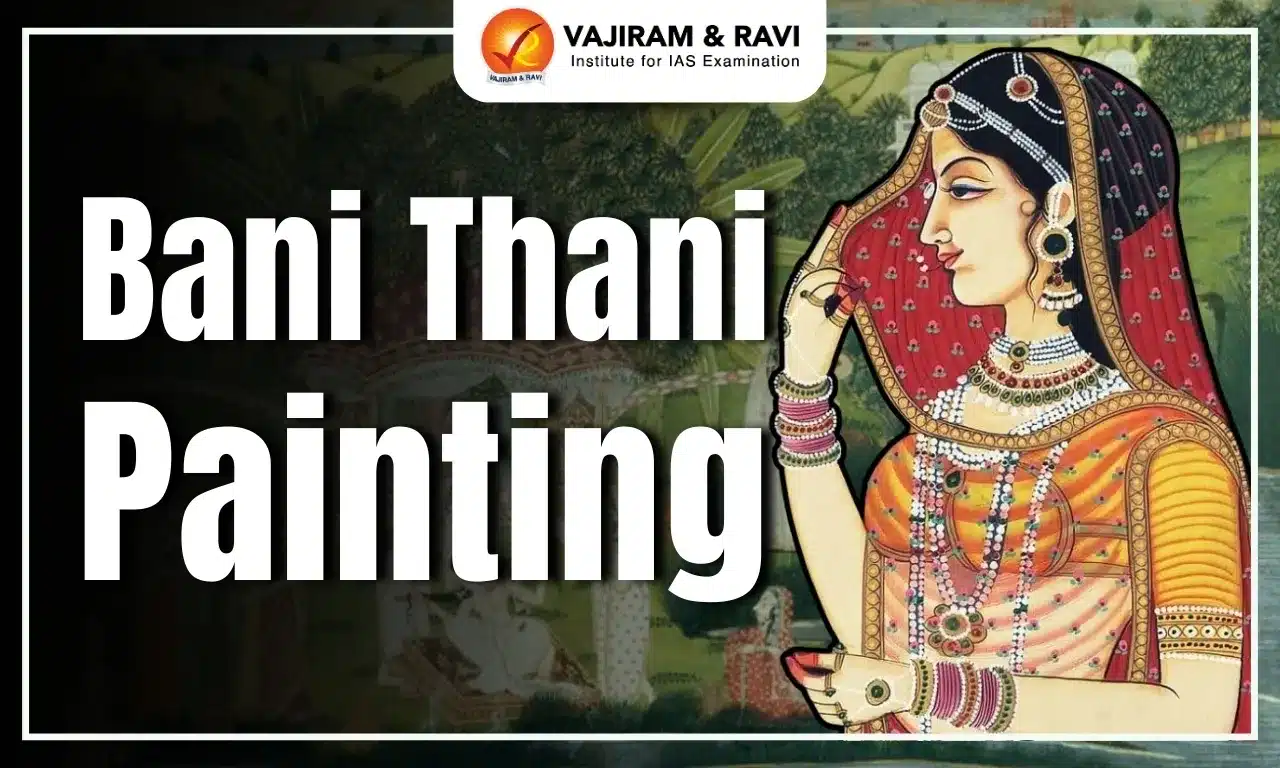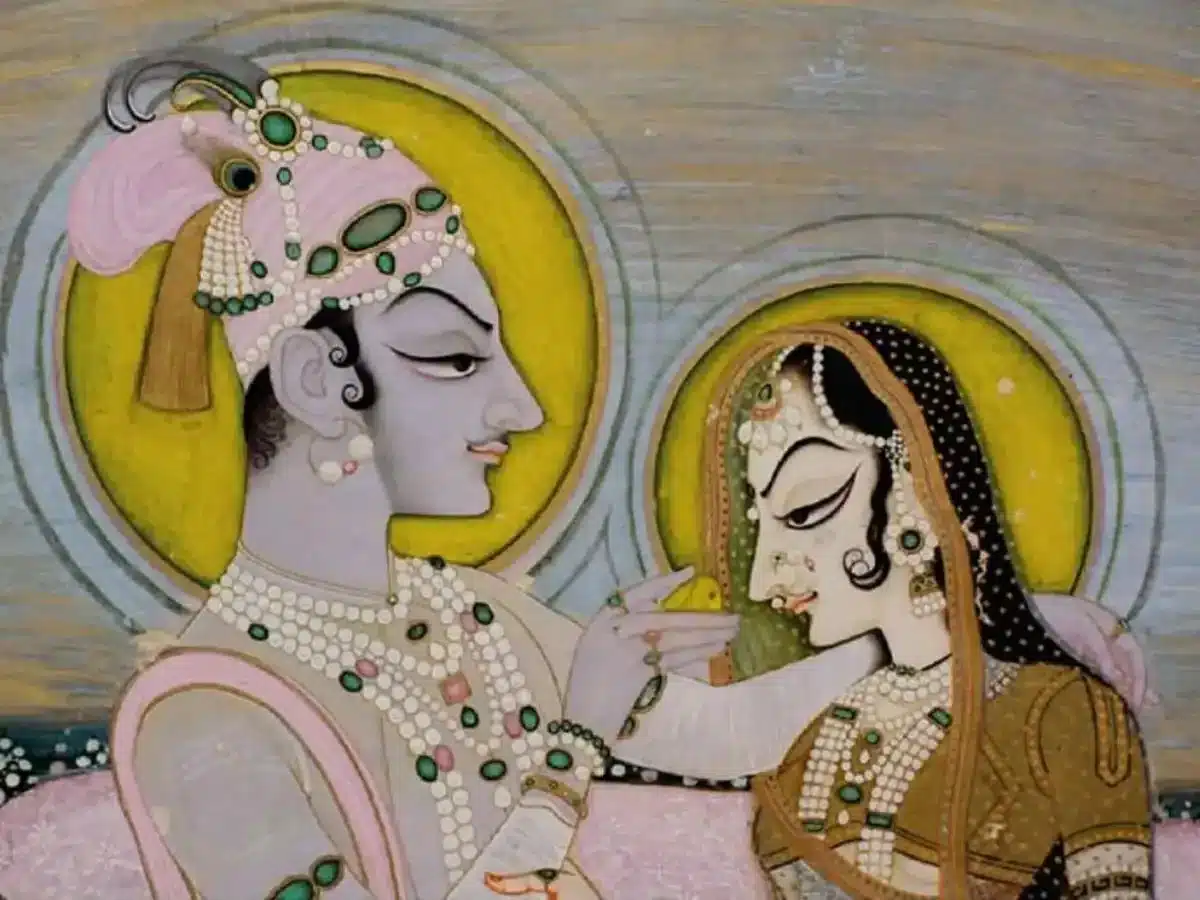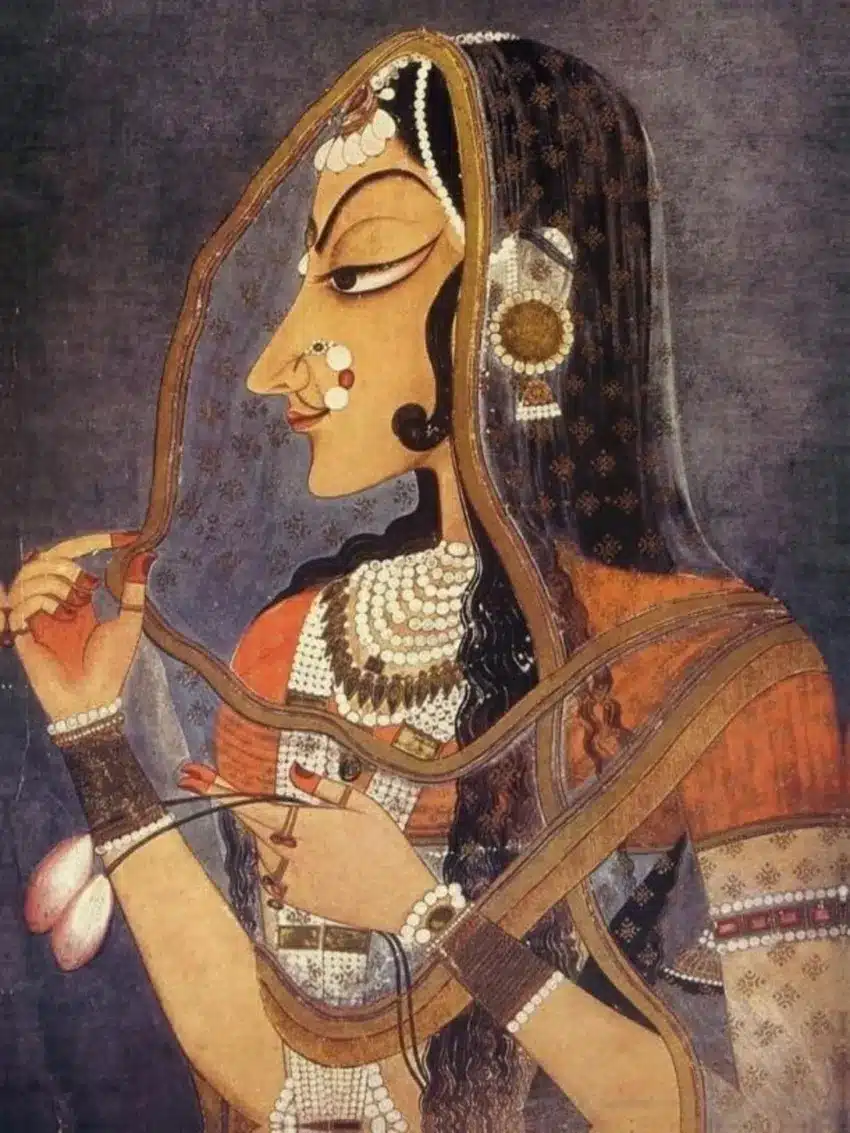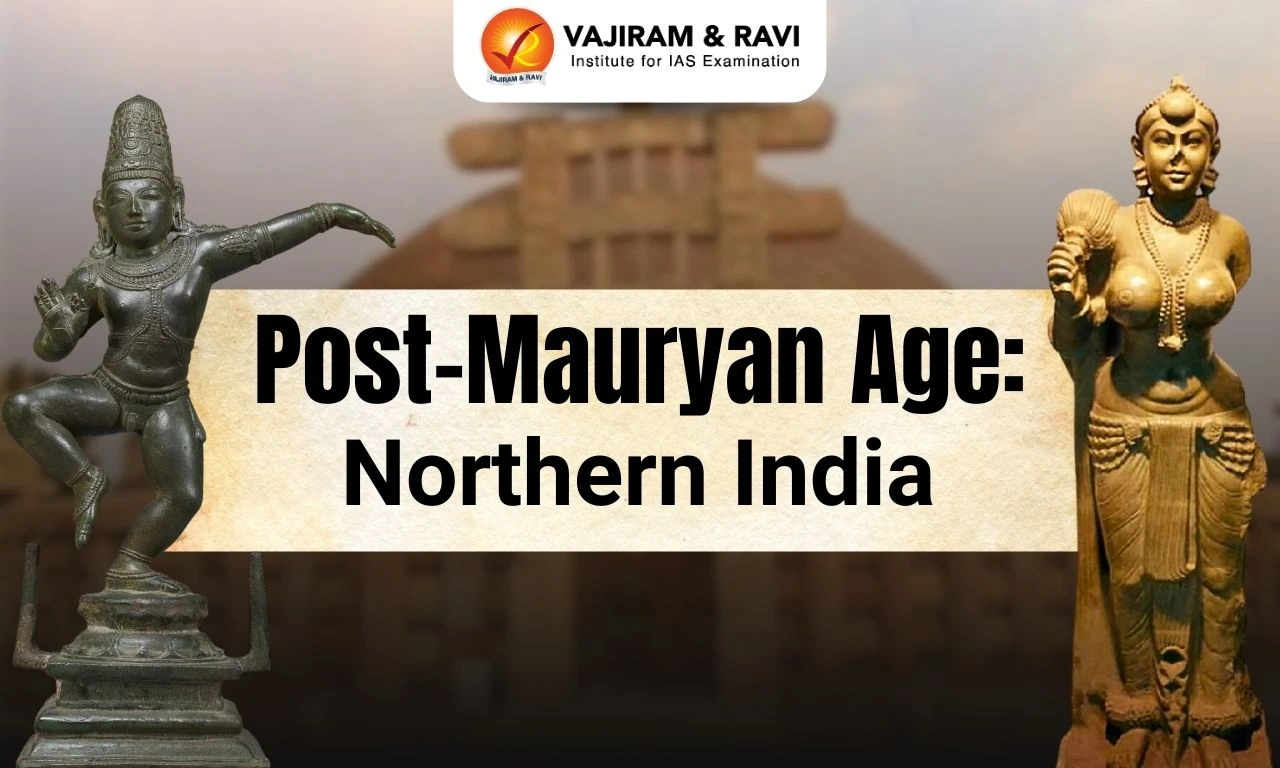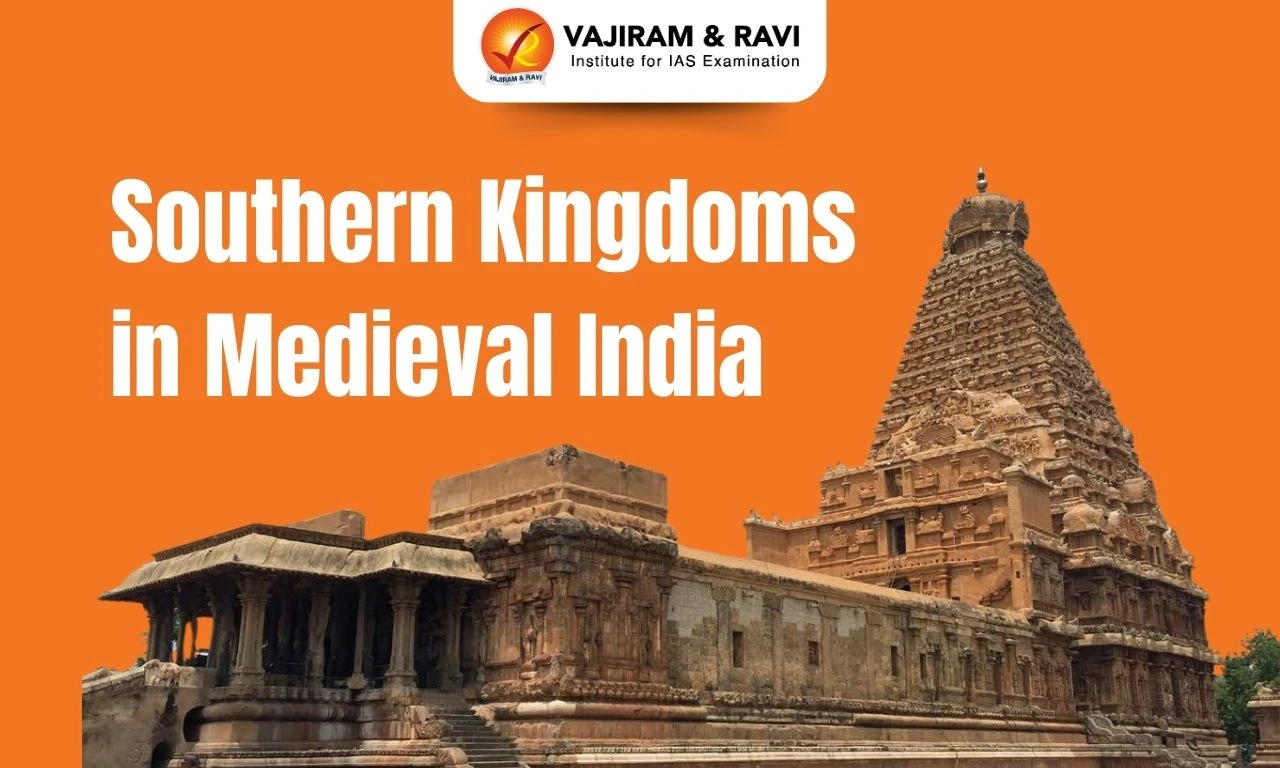Bani Thani painting is a celebrated masterpiece of the 18th-century Kishangarh School, known for its idealised depiction of feminine beauty. Credited to court painter Nihal Chand under the patronage of Raja Sawant Singh, it features an elongated face, arched eyebrows, and lotus-shaped eyes, symbolising grace and elegance.
Emerging as part of the Kishangarh School, which blended Mughal techniques with devotional themes, Bani Thani influenced portrayals of Radha and Krishna. With its intricate detailing and vibrant colours, it became an iconic representation of Indian miniature art, reflecting the rich cultural and artistic heritage of Rajasthan.
Bani Thani Painting Kishangarh School
Kishangarh School of Painting is an 18th-century school of Rajasthani Indian painting that arose in the princely state of Kishangarh. It originated in the first half of the eighteenth century when court artists merged the technical aspects of Mughal painting with a new, idealized representation of devotional figures such as Krishna.
Kishangarh School Features
The school is distinguished by its individualistic facial type and its religious intensity. The sensitive and refined features of the men and women are drawn in this school. Often, the lovers are shown against courtly backgrounds or vast, detailed panoramic landscape settings, making the figures appear diminutive in comparison. A vibrant use of accentuated colours is a distinctive feature.
Bani Thani Painting Features
The Bani Thani painting is a renowned example of Rajasthani miniature art, originating from Kishangarh, Rajasthan. Local beliefs credit Bani Thani, a singer and consort of Maharaja Sawant Singh, as the model for the painting. This style became an idealized representation of feminine beauty, later applied to Radha, Krishna, and the Gopis depictions. Key Features of Bani Thani Paintings:
- Elegant Facial Features: The Bani Thani painting features an elongated face in profile, with a pointed nose and chin for a delicate look. Large, curved eyes are heavy-lidded and almond-shaped, creating a serene expression.
- The subject has arched eyebrows and serpentine hair, adding elegance and ethereal beauty.
- Serene Expression: The enigmatic look of Bani Thani’s face is calm and composed, with lotus-shaped eyes and a sharp nose, which emphasize her grace.
- This tranquil demeanour reflects an almost divine beauty, creating an aura of serenity and elegance.
- Traditional Attire and Jewellery: Bani Thani is adorned with intricate jewellery, such as elaborate necklaces, earrings, and headpieces, which enhance her regal and aristocratic appearance.
- Her rich clothing is vibrant, with detailed patterns and borders that reflect the luxury and elegance of the subject.
- Bold, Vibrant Colours: The painting uses bright, bold colours like gold, red, green, and blue, emphasizing the subject’s beauty and grace, and creating a vivid, eye-catching visual impact that highlights her divine qualities.
- Fine Detailing: The intricate brushwork captures fine details in the face, clothing, and jewellery, showcasing the artist's skill. Additionally, refined patterns in the clothing and jewellery are meticulously painted, adding depth and sophistication to the artwork.
- Cultural and Historical Significance: Developed during Maharaja Savant Singh's reign in Kishangarh, the Bani Thani painting style was popularised by regional artists, especially Nathadwara.
- This style not only symbolises beauty but also intellectual and poetic grace, and over time, it became a model for depictions of divine figures like Radha, Krishna, and the Gopis.
Bani Thani Painting Patronage
By the mid-seventeenth century, under Man Singh’s patronage (1658–1706), this distinctive artistic style began to emerge in the Kishangarh court. Its evolution is credited to Raja Sawant Singh who penned several religious poems under the name Nagari Das. The late 18th and early 19th centuries saw the final stages of the Kishangarh school under the patronage of Kalyan Singh.
Bani Thani Painting Themes
Like the previous rulers of Kishangarh, Sawant Singh was a strict adherent of the Pushtimarg sect of Vallabhacharya and devoted to lord Krishna. Krishna Lila and other scenes from the Bhagavata Purana became the primary focus of Kishangarh Painting.
- Apart from the devotional themes, several humorous paintings and equine portraits were painted in the Kishangarh school. They followed the Mughal tradition of portraying animals and also served as a means of record-keeping.
- Examples include the brilliant series of paintings on the Radha–Krishna Leela was the inspiration of Sawant Singh. In the late eighteenth and early nineteenth centuries, the themes were mainly Gitagovinda and Ramayana.
Bani Thani Painting Artists
The artist largely responsible for transmitting the romantic and religious passions of Raja Sawant Singh was Nihal Chand. Other prominent artists were Amar Chand and Surajmal. In the late eighteenth and early nineteenth centuries, under the reign of Kalyan Singh, notable works were executed by Ladli Das.
Bani Thani Painting UPSC PYQs
Q1. The well-known painting “BaniThani” belongs to the: (UPSC Prelims 2018)
- a) Bundi School
- b) Jaipur School
- c) Kangra School
- d) Kishangarh School
Ans: (d)
Last updated on December, 2025
→ Check out the latest UPSC Syllabus 2026 here.
→ Join Vajiram & Ravi’s Interview Guidance Programme for expert help to crack your final UPSC stage.
→ UPSC Mains Result 2025 is now out.
→ UPSC Notification 2026 is scheduled to be released on January 14, 2026.
→ UPSC Calendar 2026 is released on 15th May, 2025.
→ The UPSC Vacancy 2025 were released 1129, out of which 979 were for UPSC CSE and remaining 150 are for UPSC IFoS.
→ UPSC Prelims 2026 will be conducted on 24th May, 2026 & UPSC Mains 2026 will be conducted on 21st August 2026.
→ The UPSC Selection Process is of 3 stages-Prelims, Mains and Interview.
→ UPSC Result 2024 is released with latest UPSC Marksheet 2024. Check Now!
→ UPSC Prelims Result 2025 is out now for the CSE held on 25 May 2025.
→ UPSC Toppers List 2024 is released now. Shakti Dubey is UPSC AIR 1 2024 Topper.
→ UPSC Prelims Question Paper 2025 and Unofficial Prelims Answer Key 2025 are available now.
→ UPSC Mains Question Paper 2025 is out for Essay, GS 1, 2, 3 & GS 4.
→ UPSC Mains Indian Language Question Paper 2025 is now out.
→ UPSC Mains Optional Question Paper 2025 is now out.
→ Also check Best IAS Coaching in Delhi
Bani Thani Painting FAQs
Q1. Which painting is known as the Indian Mona Lisa?+
Q2. Who is Bani Thani in the Indian Mona Lisa painting?+
Q3. What is Kishangarh school famous for?+
Q4. Where is the original Bani Thani painting?+
Q5. What is the Indian version of the Mona Lisa?+
Tags: Art & Culture UPSC Notes bani thani painting kishangarh school quest



